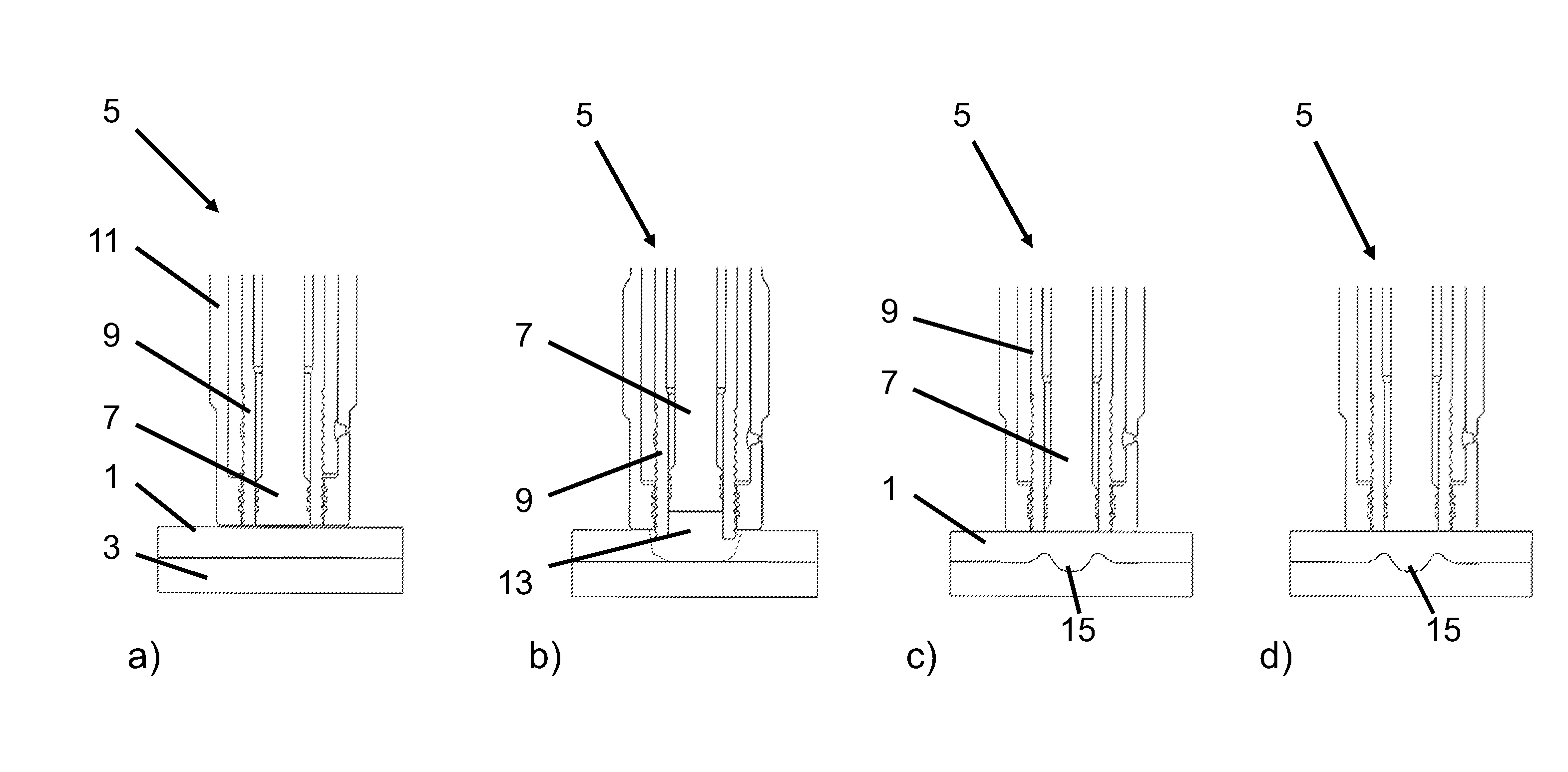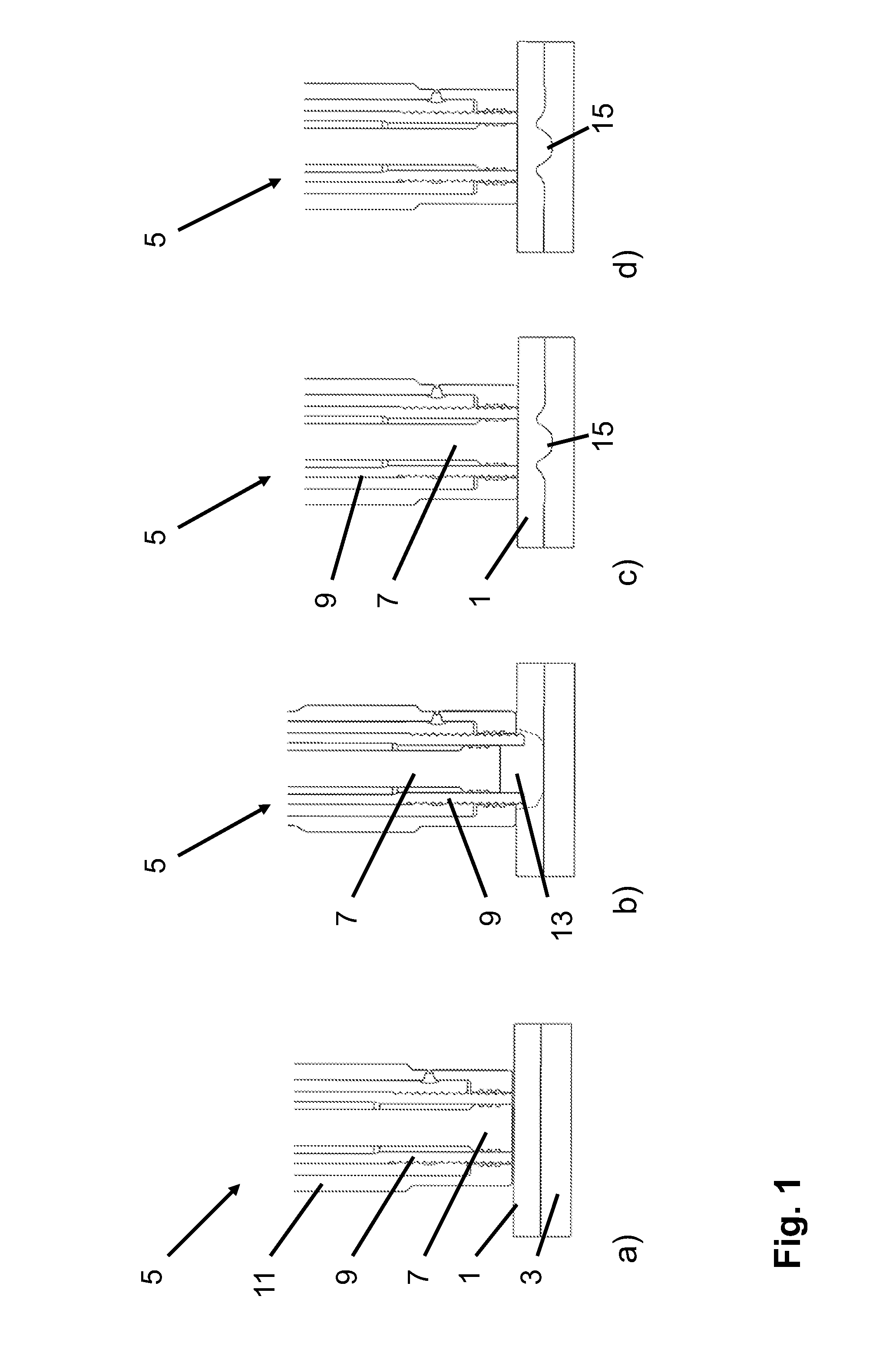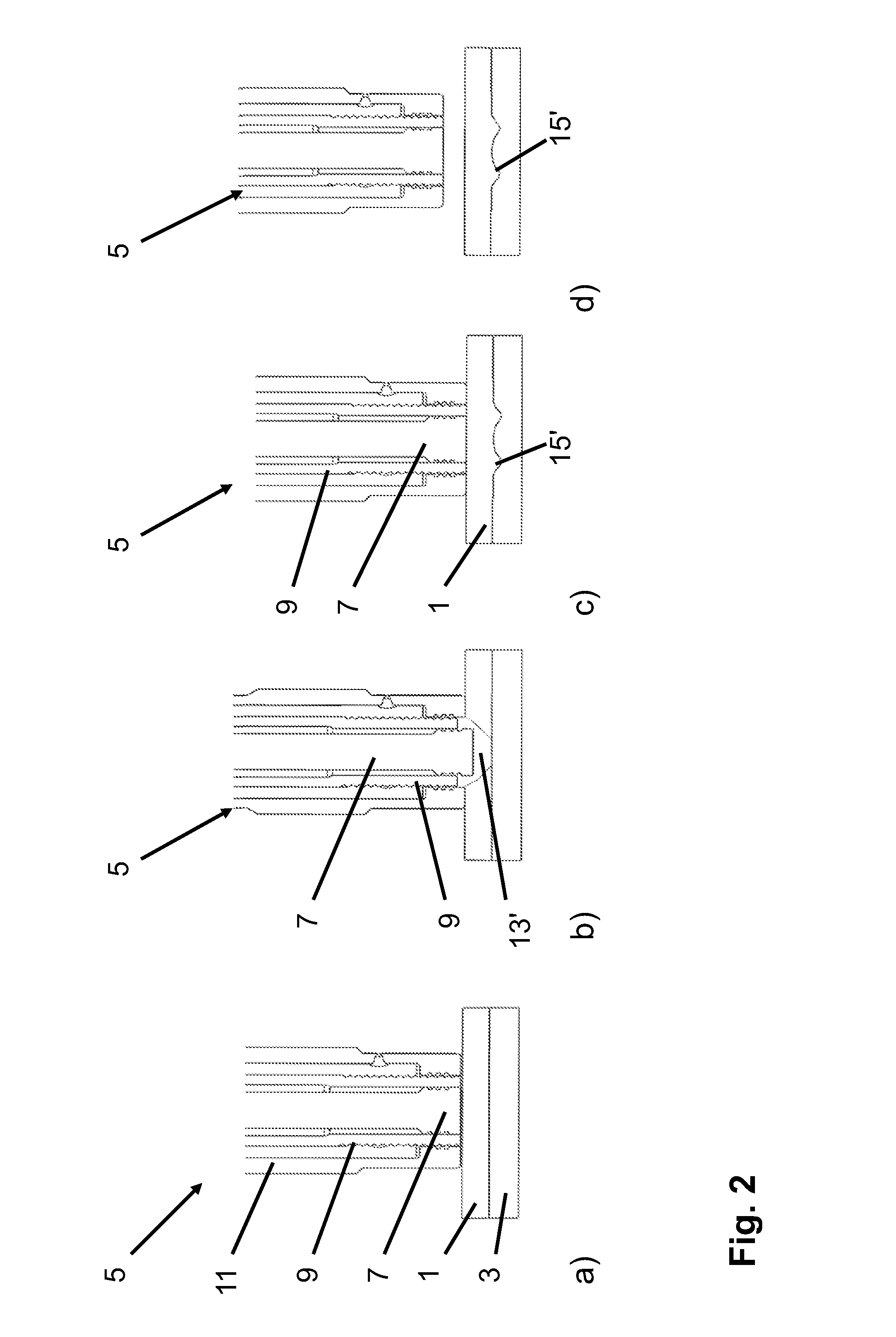Method for joining metal and plastic workpieces
a technology of metal workpieces and plastic workpieces, applied in the direction of metal workpiece holders, large fixed members, supporters, etc., can solve the problems of increased device weight, high stress concentration levels, and disadvantages, and achieve the effect of convenient application
- Summary
- Abstract
- Description
- Claims
- Application Information
AI Technical Summary
Benefits of technology
Problems solved by technology
Method used
Image
Examples
Embodiment Construction
[0033]The present invention is susceptible of embodiment in many different forms. While the drawings illustrate, and the specification describes, certain preferred embodiments of the invention, it is to be understood that such disclosure is by way of example only. There is no intent to limit the principles of the present invention to the particular disclosed embodiments.
[0034]As shown in Part a) of FIG. 1 in a first step of an example of the method according to the present invention a metal workpiece 1 and a plastic workpiece 3 are positioned such that contact surfaces of the workpieces 1, 3 abut on each other and a stack is formed. Here, even though it is not shown in the schematic representation of the present example of the joining method the contact surfaces of the workpieces 1, 3 may be cleaned by grinding off these surfaces before being positioned on each other.
[0035]In the present example the metal workpiece 1 is formed of aluminum or magnesium and the plastic workpiece 3 is ...
PUM
| Property | Measurement | Unit |
|---|---|---|
| friction | aaaaa | aaaaa |
| distance | aaaaa | aaaaa |
| time | aaaaa | aaaaa |
Abstract
Description
Claims
Application Information
 Login to View More
Login to View More - R&D
- Intellectual Property
- Life Sciences
- Materials
- Tech Scout
- Unparalleled Data Quality
- Higher Quality Content
- 60% Fewer Hallucinations
Browse by: Latest US Patents, China's latest patents, Technical Efficacy Thesaurus, Application Domain, Technology Topic, Popular Technical Reports.
© 2025 PatSnap. All rights reserved.Legal|Privacy policy|Modern Slavery Act Transparency Statement|Sitemap|About US| Contact US: help@patsnap.com



